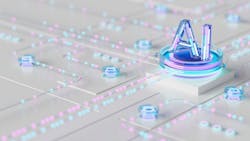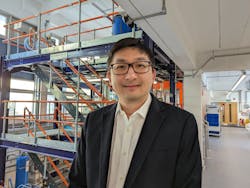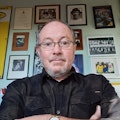Electrochemical Researcher Investigates AI to Advance Clean Energy
“Is it true you’re not really a chemical engineer?”
It’s an unlikely start to an interview with a professor who, until last September, was head of the Department of Chemical Engineering at Loughborough University, Loughborough, U.K.
Jin Xuan, now associate dean of research and innovation for the Faculty of Engineering and Physical Sciences and holder of the chair in sustainable processes at the University of Surrey, Guildford, U.K., grins broadly: “I took all my degrees through mechanical engineering and then suddenly I became head of a department of chemical engineering. It’s not a traditional journey!”
Today, Xuan describes himself as an energy researcher.
This interest in energy, specifically via electrochemistry, started when he landed a Ph.D. in Hong Kong that involved modeling the fluid dynamics occurring within hydrogen fuel cells.
“It was a really exciting opportunity. They were quite a new topic then, with lots of unknowns,” he says.
Since then, Xuan’s electrochemical research has gained international respect, winning many accolades from the science and engineering communities for its excellence.
Motivated by research since his undergraduate days, Xuan notes a vital change over the last 10 years: “It’s become much more challenge-driven, with the concept of a single discipline with defined boundaries becoming less and less important.”
Researching AIHis latest challenge comes after winning a prestigious five-year Open Fellowship from the U.K.’s Engineering and Physical Sciences Research Council (EPSRC) worth £2 million ($2.5 million) to develop the next generation of clean energy devices using advanced artificial intelligence (AI). He’s particularly keen to crack the electrochemical reduction of nitrogen to generate ammonia.
He plans to draw on all the interdisciplinary skills and relationships he has forged to understand how the advanced AI used to design complex electrochemical devices comes to its conclusions.
“I plan to open the ‘black box’ to find reliable, explainable and transferable results, i.e., to find the relationship between the inputs and outputs,” Xuan explains.
“However,” he adds, “this is very difficult because AI is data-driven by definition. So, you put a lot of data in, and the neural networks or different AI models give you the output. And we are not supposed to make it completely open, or it just becomes computational fluid dynamics (CFD) with all the limitations that kind of modeling brings; for example, the computational resources needed to go through all the parametric analyses and simulations to design a new fuel cell. AI can achieve almost instantly what CFD would take tens of years to achieve.”
Xuan is aiming for a type of hybrid model that, while data-driven, also embeds physical and chemical laws that can subsequently be traced back using sophisticated coding to visualize the logic stream and see their roles in linking the output with the input.
“So now we can design a fuel cell, run it through AI by different parametric analyses and within hours, you can know the optimum design. Also, you can optimize the system in real-time by using AI as a powerful predictive tool to optimize factors external to the fuel cell, such as the unpredictable wind and solar energy they need to operate. These things really could not be done in the past,” he says.
Working Backward
Such a model also opens the potential for inverse design, where you start from the final objective. Here, you select the power and efficiency characteristics you want from a new fuel cell, and AI will tell you the design parameters. “That’s a complete change of the design mindset philosophy,” notes Xuan. “For hundreds of years, design practice has been based on forward design, and now AI can completely change direction with inverse design.”
Xuan notes that his and other research teams already have published exciting early results but acknowledges there’s still a way to go to move the idea into actual engineering practice: “We have the conceptualized product; now we need to make it a real product that will be a powerful tool used by industry. That will be the next step.”
Commenting on concerns raised by the advent of AI, Xuan believes it will redefine what engineering means and demand new skillsets of practitioners. His students at Surrey are already studying some of these, including data analytics, coding and virtual reality. Ethics, morality, policy and law must also be included here. “ChatGPT, for example, is a powerful tool and should be used, but it needs to be regulated in professional settings,” he says.
The rise of AI and other digital technologies, coupled with the increasingly blurred boundaries between engineering disciplines, demand, he believes, a radical rethink of engineering education.
“The future of chemical engineering, however, largely relies on electrochemistry and electrochemical engineering,” Xuan concludes.
About the Author
Seán Ottewell
Editor-at-Large
Seán Crevan Ottewell is Chemical Processing's Editor-at-Large. Seán earned his bachelor's of science degree in biochemistry at the University of Warwick and his master's in radiation biochemistry at the University of London. He served as Science Officer with the UK Department of Environment’s Chernobyl Monitoring Unit’s Food Science Radiation Unit, London. His editorial background includes assistant editor, news editor and then editor of The Chemical Engineer, the Institution of Chemical Engineers’ twice monthly technical journal. Prior to joining Chemical Processing in 2012 he was editor of European Chemical Engineer, European Process Engineer, International Power Engineer, and European Laboratory Scientist, with Setform Limited, London.
He is based in East Mayo, Republic of Ireland, where he and his wife Suzi (a maths, biology and chemistry teacher) host guests from all over the world at their holiday cottage in East Mayo.


